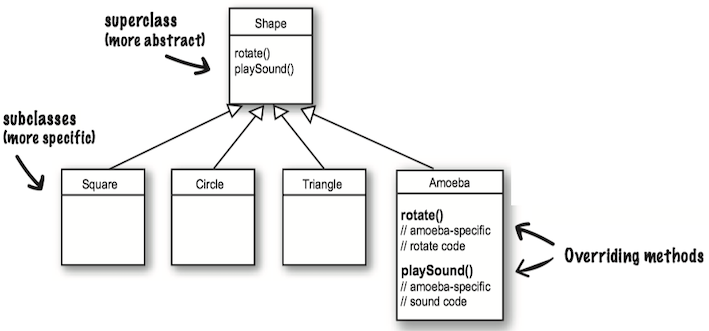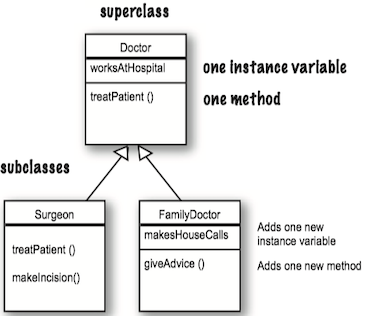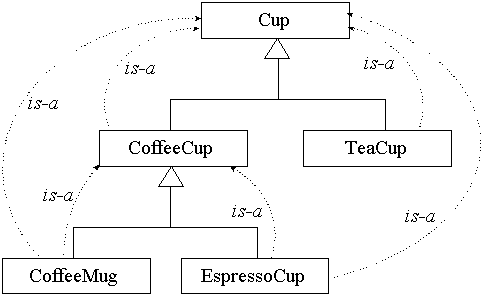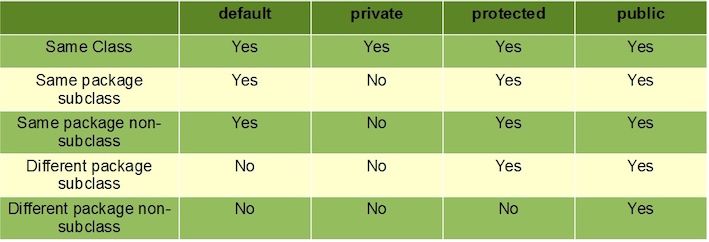7 Inheritance and polymorphism
1 Overriding¶
Overriding(重写) means that a subclass redefines one of its inherited methods when it needs to change or extend the behavior of that method. 重写是子类重新定义了继承的方法以改变或扩展此方法的行为。
In the example as follows, the Amoeba class overrides the methods of the Shape class. Then at runtime, the JVM knows exactly which rotate() method to run when someone tells the Amoeba to rotate.

If you want to protect a specific method from being overridden, mark the method with the final modifier. 如果你想要防止特定的方法被重写,可以将该方法标识成final。
Rules for overriding:
- Arguments must be the same, and return types must be compatible.参数必须要一样,且返回类型必须要兼容.
- The method can't be less accessible(e.g change from public to private). 不能降低方法的访问权限
2 Inheritance¶
When one class inherits from another, the subclass inherits from the superclass. In Java, we say that the subclass {extends} the superclass(子类继承自父类)。
- A class that inherits from another is called a subclass(子类).
-
A class that provides attributes and methods for inheritance by subclasses is called a superclass(父类).
-
The subclass inherits the instance variables and methods of the superclass.
- The subclass can add new methods and instance variables of its own, and it can override the methods it inherits from the superclass.
- Instance variables are not overridden because they don't need to be. They don't define any special behavior.
Advantage:
- Inheritance avoids duplicating code in subclasses.
- Inheritances lets you guarantee that all classes grouped under a certain supertype have all the methods that the supertype has. In other words, you define a common protocol for a set of classes related through inheritance.
An inheritance example:
public class Doctor {
boolean worksAtHospital;
void treatPatient() { // perform a checkup }
}
public class FamilyDoctor extends Doctor {
boolean makesHouseCalls;
void giveAdvice() { // give homespun advice }
}
public class Surgeon extends Doctor{
void treatPatient() { // perform surgery }
void makeIncision() { // make incision (yikes!) }
}

Using IS-A¶
When you want to know if one thing should extend another, apply the IS-A test.
- If class B extends class A, class B IS-A class A.

Super¶
In a subclass, what if you want to use BOTH the superclass version and overriding subclass version of a method? In other words, you don't want to completely replace the superclass version, you just want to add more stuff to it.
SOLUTION: In your subclass overriding method, you can call the superclass version using the keyword super.
// this calls the inherited version on roam(),
// then comes back to do your own subclass-specific code
public void roam(){
super.roam();
//my own roam stuff
}
Using the super keyword to invoke a superclass's constructor
Access Level¶
Access levels(访问权限) control who sees what, and are crucial to having well-designed, robust Java code.
There are four access levels, moving from most restrictive to least, the four access levels are:
private, default, protected, public:
- public members are inherited.
- private members are not inherited.

Java 8 Interface Change¶

Java 8 interface changes include static methods and default methods in interfaces. Prior to Java 8, we could have only method declarations in the interfaces. But from Java 8, we can have default methods and static methods in the interfaces.
3 Polymorphism¶
With polymorphism, the reference type can be a superclass of the actual object type.
运用多态时,引用变量可以是实际对象类型的父类,也就是说引用变量可以指向子类。
Animal[] animals = new Animal[3];
// You can put ANY subclass of Animal in the Animal array!
animals [0] = new Dog(); // the reference and the object are different
animals [1] = new Cat();
animals [2] = new Lion();
// You get to loop through the array
// and call one of the Animal-class methods,
// and every object does the right thing!
for (int i = 0; i < animals.length; i++) {
animals[i].eat();
animals[i].roam();
}
You can have polymorphic arguments and return types. 参数和返回类型也可以多态。
class Vet {
// The Animal parameter can take ANY Animal type as the argument.
public void giveShot(Animal a) {
a.makeNoise();
}
}
class PetOwner {
public void start() {
Vet v = new Vet();
Dog d = new Dog();
Hippo h = new Hippo();
// The vet's giveShot() method can take any Animal you give it.
// As long as the object you pass in as the argument
// is a subclass of Animal, it'll work.
v.giveShot(d);
v.giveShot(h);
}
SO....
If I write my code using polymorphic arguments, where I declare the method parameter as a superclass type, I can pass in any subclass object at runtime.
With polymorphism, you can write code that doesn't have to change when you introduce new subclass types into the program. 通过多态,你就可以编写出引进新型子类时也不必修改的程序。
多态实现原理
多态允许具体访问时实现方法的动态绑定(dynamic binding)。Java对于动态绑定的实现主要依赖于方法表,通过继承和接口的多态实现有所不同。
- 继承:在执行某个方法时,在方法区中找到该类的方法表,再确认该方法在方法表中的偏移量,找到该方法后如果被重写则直接调用,否则认为没有重写父类该方法,这时会按照继承关系搜索父类的方法表中该偏移量对应的方法。
- 接口:Java允许一个类实现多个接口,从某种意义上来说相当于多继承,这样同一个接口的的方法在不同类方法表中的位置就可能不一样了。所以不能通过偏移量的方法,而是通过搜索完整的方法表。
CAN'T INHERIT¶
There are three things that can prevent a class from being subclassed.
- A non-public class can be subclassed only by classes in the same package as the class.
- Using keyword modifier
finalto stop a class from being subclassed. 使用final修饰符阻止类被继承。 - If a class has only
privateconstructors, it can't be subclassed. 如果类只拥有private的构造程序,它不能被继承。
4 Overloading¶
Method overloading(方法重载) is nothing more than having two methods with the same name but different argument lists . 方法重载就是方法名称相同,但参数列表不同。
- Purpose: overloading lets you make multiple versions of a method, with different argument lists, for convenience to the callers.
- The return types can be different.
- You can't change only the return type.
- You can vary the access levels in any direction.